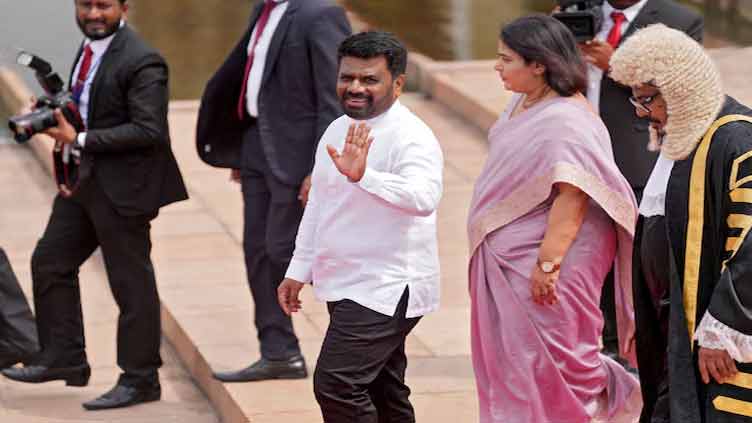Sri Lanka's new president presents first budget with focus on crisis recovery

Business
The World Bank estimates Sri Lanka will grow 3.5pc this year
COLOMBO (Reuters) - Sri Lanka's new President Anura Kumara Dissanayake will outline the government's revenue and policy goals in his first full-year budget on Monday, seeking to extend the country's recovery from a financial crisis and signal its alignment with a $2.9 billion IMF bailout program.
A severe drain in dollar reserves plunged the island nation into turmoil three years ago, sending inflation soaring, depreciating its currency and forcing a $25 billion foreign debt default.
Since locking down $2.9 billion in emergency funding from the International Monetary Fund in March 2023, Sri Lanka has posted a faster than expected recovery. Inflation has eased, the central bank has slashed interest rates to pre-crisis levels, and debt restructuring was completed in December.
Dissanayake, who is also the finance minister, is hoping to bolster the economic recovery by lowering taxes, increasing welfare and supporting local industries in line with his pre-election pledges.
But he faces the challenge of staying within the parameters set out by the IMF, which includes an ambitious deficit target of 5.2% of GDP and raising revenue to 15.1% of GDP in 2025 to secure the next tranche of about $333 million under the bailout.
Analysts say he will likely have to impose fresh taxes and realign expenditures to increase its public revenue.
"From this budget we will try to gauge the credibility of the medium-term fiscal plan, and the impact of policies on the debt and deficit going forward," Sagarika Chandra, director of Asia Pacific Sovereigns at Fitch Ratings, told Reuters.
Meeting the IMF targets is crucial for Sri Lanka to improve its credit rating after exiting from default status, so the country can eventually return to international financial markets to borrow and repay its debts from 2028 onwards.
Investors will also be looking for any plans on how to attract more foreign investment as the government tries to rebuild its reserves.
Sri Lanka's current reserves are at $6 billion, enough to cover four months of imports, the latest central bank data showed. In the depths of the crisis, reserves had shrunk to just $1.9 billion at the end of 2022.
"For a positive rating action, a trigger could be a sustained decline in the debt ratios over time, which is underpinned by a credible medium term fiscal consolidation strategy including an increase in revenues," Chandra added.
"Historically, revenue build-up has been a weakness."
Sri Lanka's economy is expected to have grown by 5% in 2024, according to the latest central bank data, after contracting 2.3% in 2023. The World Bank estimates Sri Lanka will grow 3.5% this year.



